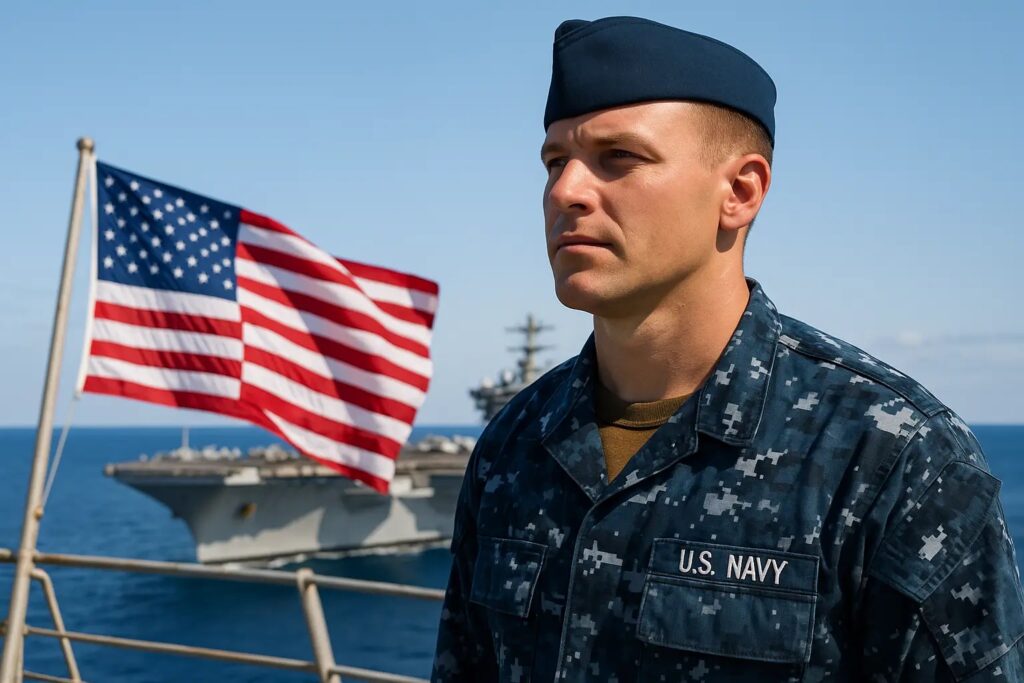Introduction
The United States Navy (USN) stands as a pillar of global maritime power. With unmatched capabilities, a legacy of victory, and cutting-edge technology, it serves as the frontline defense for America’s interests across the oceans. More than just a fleet of ships, the Navy represents honor, resilience, and global reach.
Origins of the U.S. Navy
A Force Born from Revolution
The U.S. Navy’s roots stretch back to the American Revolutionary War, when the Continental Congress authorized the first naval force in 1775 to battle British sea dominance. Though the initial fleet was short-lived, it laid the foundation for a permanent naval force, officially re-established in 1794 with the construction of six frigates.
Early Challenges and Growth
In the early 19th century, the Navy took on piracy in the Mediterranean, clashed with Britain in the War of 1812, and protected American trade routes. These early missions shaped a battle-hardened, mission-ready force that would soon evolve into a global player.
Expanding into a Global Power
The Civil War and Beyond
The U.S. Navy played a decisive role in the American Civil War, implementing effective blockades and riverine warfare. This era marked the Navy’s growing industrial and strategic importance.
Rise to the World Stage
By the late 1800s, under leaders like Admiral Alfred Thayer Mahan, naval power became central to U.S. foreign policy. The Spanish–American War in 1898 showcased this new strength, turning the U.S. into a global naval force with overseas bases and territories.
World Wars and Technological Transformation
World War I
During WWI, the Navy escorted convoys and helped suppress German U-boats. Though the conflict was short for America, it showed the importance of sea control and logistics.
World War II: The Turning Point
WWII elevated the U.S. Navy to unprecedented dominance. It fought fierce battles in both the Atlantic and Pacific, from the Normandy landings to the Battle of Midway. Aircraft carriers replaced battleships as the core of naval strategy. The Navy emerged with the largest fleet in the world.
Cold War Strategy and Nuclear Age
Deterrence and Defense
After WWII, the Navy became a key tool in containing Soviet expansion. Nuclear-powered submarines, aircraft carriers, and ballistic missile systems turned it into a pillar of Cold War deterrence.
Global Deployments
From Korea to Vietnam and the Persian Gulf, the Navy projected American power and secured international waterways. With fleets spread across the globe, it ensured freedom of navigation and strategic presence.
Post-9/11 and Modern Operations
Counterterrorism and New Missions
After 9/11, the Navy took on new roles in fighting global terrorism. Carrier groups supported combat missions in Afghanistan and Iraq, while Special Operations teams like the Navy SEALs became central to high-value missions — including the killing of Osama bin Laden.
Humanitarian Assistance and Peacekeeping
Beyond combat, the Navy has delivered humanitarian aid in disasters like the 2004 Indian Ocean tsunami and 2010 Haiti earthquake. Hospital ships and amphibious vessels provide rapid-response support worldwide.
Today’s U.S. Navy: Capabilities and Command
Fleet Structure and Global Presence
The Navy operates around 300 deployable ships and submarines, including 11 nuclear-powered aircraft carriers, 72 submarines, and dozens of destroyers, cruisers, and amphibious ships. It’s organized into numbered fleets covering all major oceans:
- Third Fleet: Pacific Coast
- Fifth Fleet: Middle East
- Sixth Fleet: Europe & Africa
- Seventh Fleet: Western Pacific and Indian Ocean
Naval Aviation and SEALs
The Navy’s air arm includes over 3,700 aircraft, with fighter jets, helicopters, surveillance drones, and electronic warfare craft. Elite units like the Navy SEALs operate in high-stakes environments, performing special reconnaissance, hostage rescues, and counterterrorism.
Training, Culture, and Core Values
Naval Education and Training
Naval recruits undergo rigorous training at boot camps like Great Lakes. Officers often attend the U.S. Naval Academy in Annapolis or other advanced schools. Education and discipline are central to the Navy’s mission.
Honor, Courage, Commitment
These three words define the Navy’s ethos. Sailors are trained to act with integrity, take responsibility, and serve with courage in peace or war. The Navy also champions inclusion, leadership, and innovation.
Budget, Tech, and Future Strategy
Funding the Fleet
The Navy is funded through the Department of Defense budget — approximately $250 billion annually (as of recent years). This covers personnel, maintenance, shipbuilding, aviation, and R&D.
Innovations Driving the Future
The Navy is actively investing in next-gen technologies:
- Laser weapons
- Unmanned submarines
- Hypersonic missiles
- Artificial intelligence and cyber warfare
Its goal is clear: stay dominant in an era of near-peer threats like China and Russia, while adapting to emerging challenges in space, the Arctic, and cyberspace.
The Navy’s Role in U.S. Defense Strategy
The U.S. Navy isn’t just a warfighting force — it’s a symbol of American influence. It deters conflict, defends sea lanes, supports allies, and responds to global crises. Whether patrolling the South China Sea or aiding disaster zones, the Navy remains ready — always.
Conclusion
The United States Navy is more than a maritime force — it’s a legacy, a shield, and a projection of global strength. As the world changes, the Navy evolves, maintaining its watch over the seas with unmatched precision, power, and pride.

